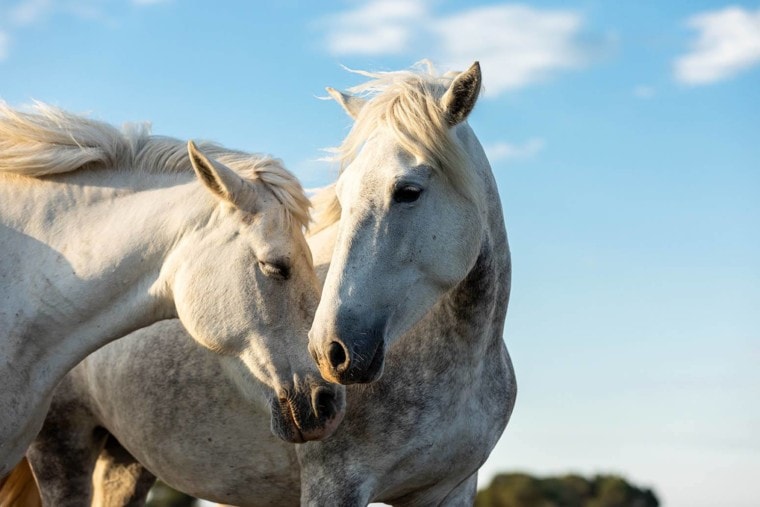
There are dozens of horse breeds that have originated from the European country of France. The country has used them for transporting people, as well as goods, for hundreds of years. Napoleon and his love of the Arabian horse meant that warhorses have been popular since around the 8th century. Today, they are still used for mounted police but are rarely employed for transport. Horse riding is still incredibly popular in the country, though, and many people choose to own giant domesticated animals for pleasure.
Top 17 French Horse Breeds:
1. French Trotter
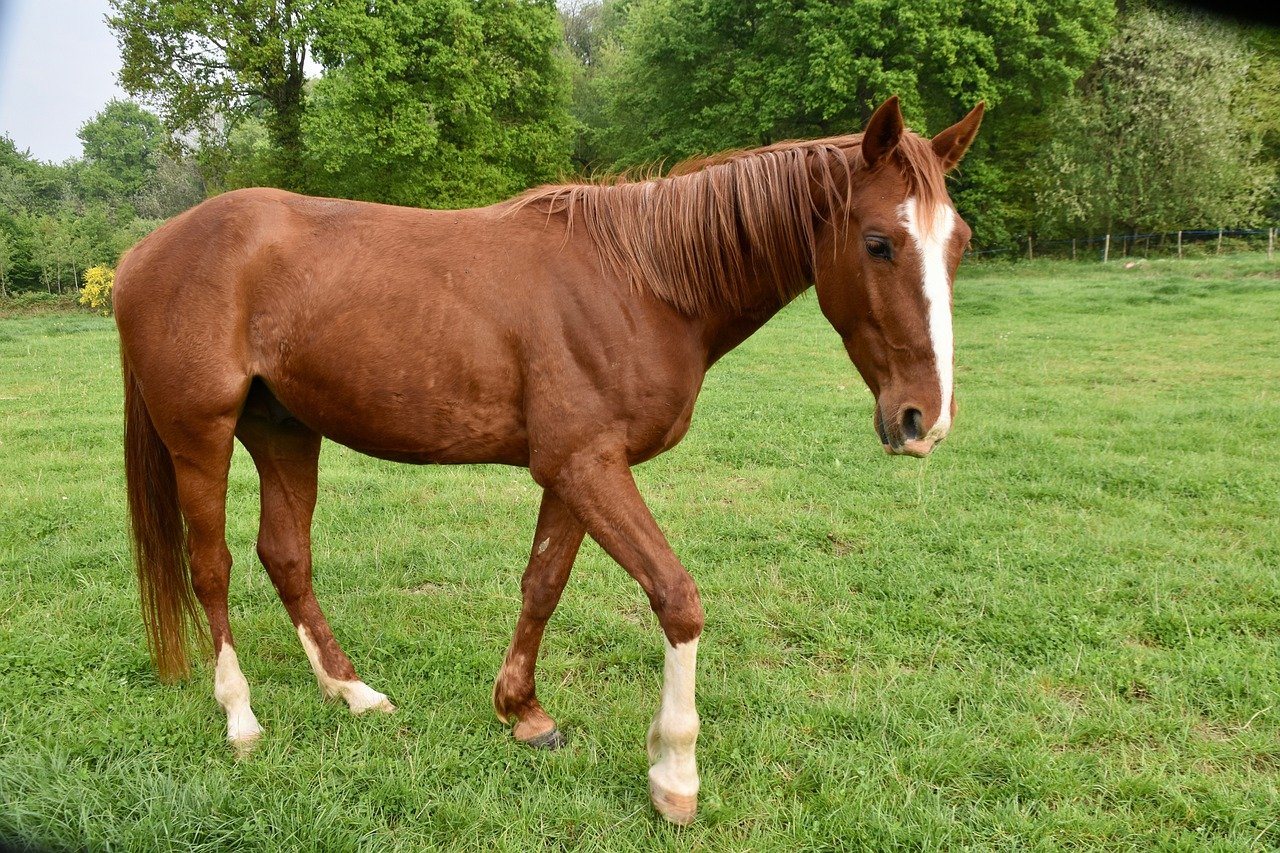
The French Trotter was bred for racing and was developed in Normandy in the 19th century. It combines the Norfolk Trotter and English Thoroughbred breeds. Generally, this breed can be of any solid color and is a big horse, typically measuring over 17 hands high. Although the breed is used primarily for racing, more than half do not make it and end up being used for riding classes and training.
2. Percheron
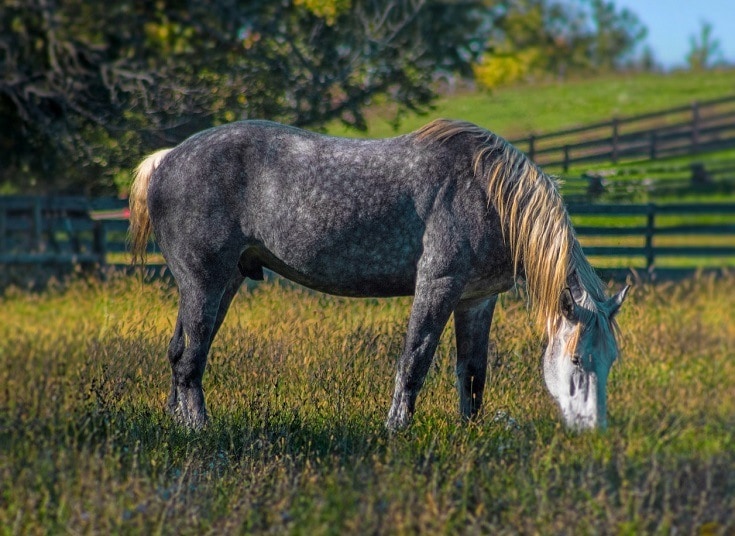
Originating from the Huisne River valley of France, the Percheron is black or gray and is considered a very intelligent breed. It is a calm horse that is not afraid to put in the work. While the breed was once favored as a warhorse, it is now used in competitive events and for range work. It is also bred and fed as human food.
3. Selle Francais
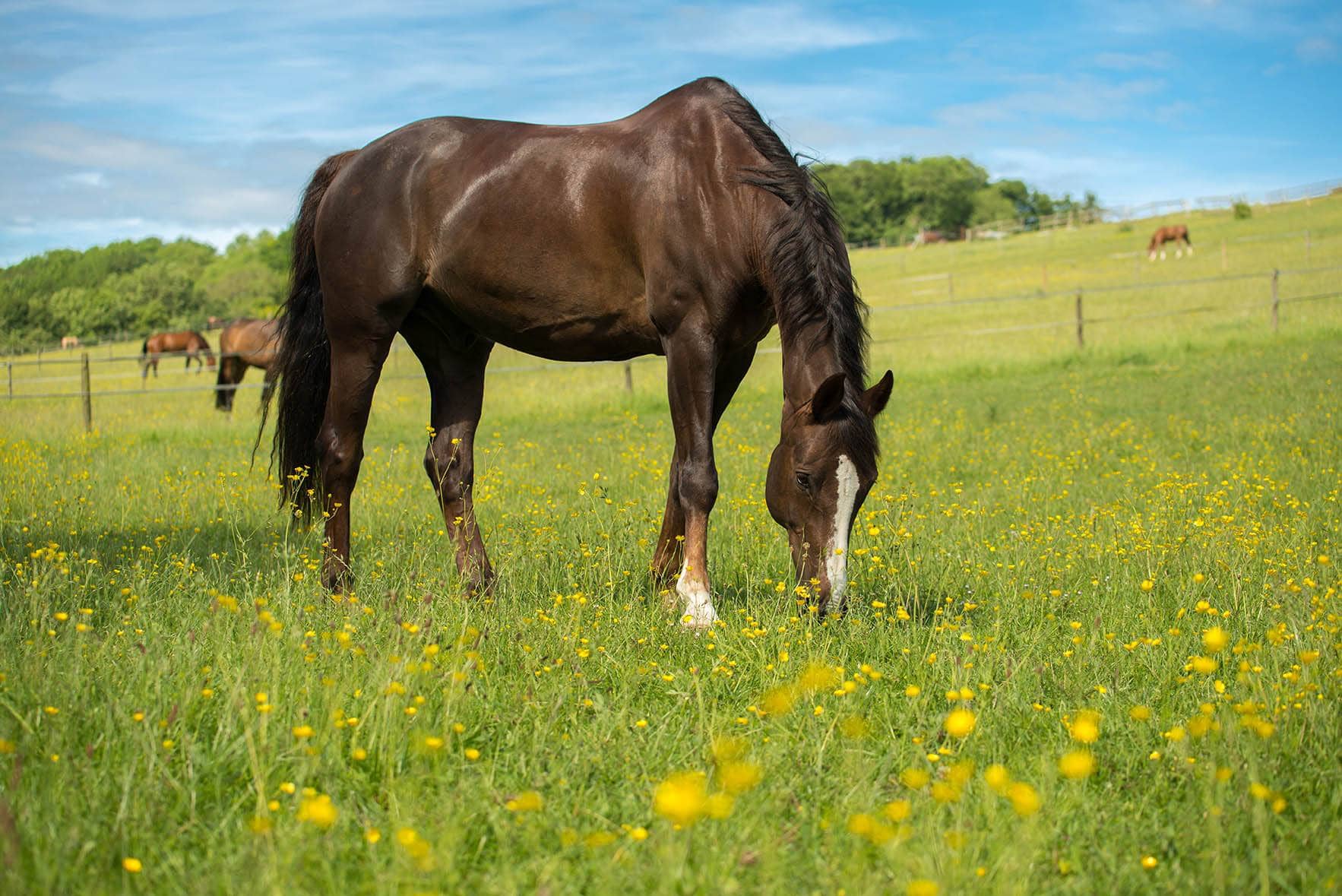
Found all over the globe, the Selle Francais is a sporty horse that was bred from the Norfolk Trotter and native French breeds. It is typically bay or chestnut in color, although you will rarely see some gray versions. The breed is used for horse racing, showjumping, and other sporting events. The average height of this breed is between 16 hands and 17.3 hands high.
4. Boulonnais Horse

The Boulonnais horse is often called the “white marble horse” because of the draft breed’s markings. The breed is centuries old and it has been bred and altered with Andalusian, Arabian, and Spanish barb horse breeds. It has an average height ranging from 15.1 to 16.3 hands so is a modest size, and it most commonly comes in gray but may be seen in black and chestnut. It is used for show jumping, dressage, eventing, and meat.
5. Camargue Horse

Considered one of the oldest breeds in the world, the Camargue comes from the now-extinct Solutre horse. The breed is gray, has black skin, and stands 13 to 14 hands, which means that it actually falls in the category of the pony. The breed can still be found in the wild but is used for agriculture and ranching and long-distance riding.
6. Auxois

The Auxois is a large breed of horse that originates from the Eastern regions of France and was bred from the Bourguignon horse, which is now extinct. It is commonly seen in bay, roan, and chestnut. Used for agriculture, meat, and leisure, the Auxois can grow to an impressive height of 15.5 to 16.5 hands.
7. Ardennais
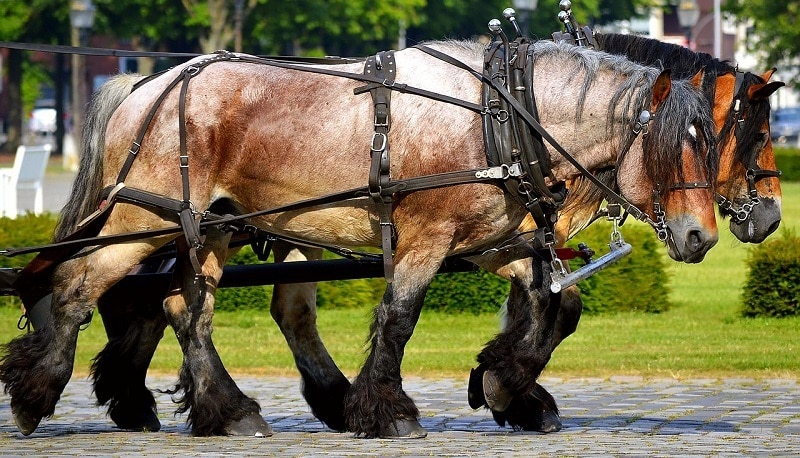
The Ardennais, or Ardennes, horse is another descendant of the Solutre horse. It stands at around 16 hands high and is most often used for meat production purposes. They are easy to feed, which makes them easy to breed and means that farmers consider them a great breed. They come in bay, gray, chestnut, and roan.
8. Trait du Nord

This draft breed was once known as the Ardennais de type Nord and was developed in Northern France as well as Western Belgium. The muscular breed is usually found in roan or chestnut colors, is used in agriculture and meat production, and may also be found pulling loads as logging horses. The breeds can grow to a height of 16.5 hands.
9. Breton Horse

Yet another draft horse, the Breton comes from the Brittany region of France and is a strong and agile animal. The breed can be used for a range of tasks according to the exact type of Breton it is. The smallest, Corlay Breton, is used for light tasks. The Postier is used for farm work and is the medium size of Breton. The Heavy Draft Breton is still used for challenging draft work, today. It will reach between 15 and 16 hands high.
10. Poitevin Horse

The endangered Poitevin horse comes from the Poitou region in Western France. It was created by crossing various breeds that were imported to the region between the 15th and 17th centuries. Ten years ago there were only 300 breeding horses left. They reach 15.5 to 16.2 hands high, and the remaining examples of this breed are used for leisure and breeding purposes.
11. Anglo-Norman Horse
Originating from Northern France, the Anglo-Norman horse combines Russian and British trotting horses. They can be found in chestnut, bay, blue, gray, roan, and other colors and markings. They are most commonly used in agriculture with the smaller horses getting simpler tasks and the larger animals getting difficult draft work. The Anglo-Norman can reach between 15 and 16.5 hands high.
12. Norman Cob

The mid-sized light draft horse, the Norman Cob, hails from the Normandy region and, although the horse was initially popular for its willingness to work at tasks, it is now used for recreational and leisure purposes, as well as for meat production. It will reach 15 to 16.3 hands high.
- You might also be interested in: Why Do People Cover Horse’s Eyes? 3 Reasons Why
13. Auvergne

From Central France, the Auvergne has undergone several rounds of cross-breeding over its life. What was once a small riding horse became a warhorse. It then became popular as transport, when it had been bred to be larger, and it almost became extinct in the 1970s. It is still highly endangered and there are only believed to be around 200 of the breed left today.
14. Henson

The Henson is a modern breed that was created to bring equine tourism to the country. It was developed from Fjord and light saddle horses, and the breed association was created in 1983. Recognized as a breed since 2005, the Henson is used exclusively for leisure and pleasure riding and it can grow between 14 and 15.3 hands high.
15. Landais

The Landais is a small pony, usually measuring between 11 and 13 hands high. It is used for riding and driving and they have a fast trotting speed. Before World War II, this breed was mostly feral, and breeding numbers do remain low today. It is believed that the Landais pony dates as far back as 732 A.D.
16. Merens

Originating from the Pyrenees and Ariegeois Mountains, the Merens includes a mountain breed that is smaller and lighter and a plains Merens which is more muscular. The breed is used as a saddle horse and is considered a rare breed today, but there are efforts to save the breed and enhance the stock. The Merens will measure between 14 and 15 hands and is always black.
17. Nivernais

The Nivernais is an endangered breed and is another that is always black. It was first bred in the late 19th century for agricultural work, but it has merged with the Percheron and, strictly speaking, the breed no longer exists in France.
Summary
The French have had dozens of horse breeds that originate from their country, although many are considered endangered or extinct now. Above, we have listed some of the more common French breeds that still exist today, as well as a handful of endangered breeds that are in danger of disappearing without breeding and conservation efforts.
Featured Image Credit: AB Photographie, Shutterstock








